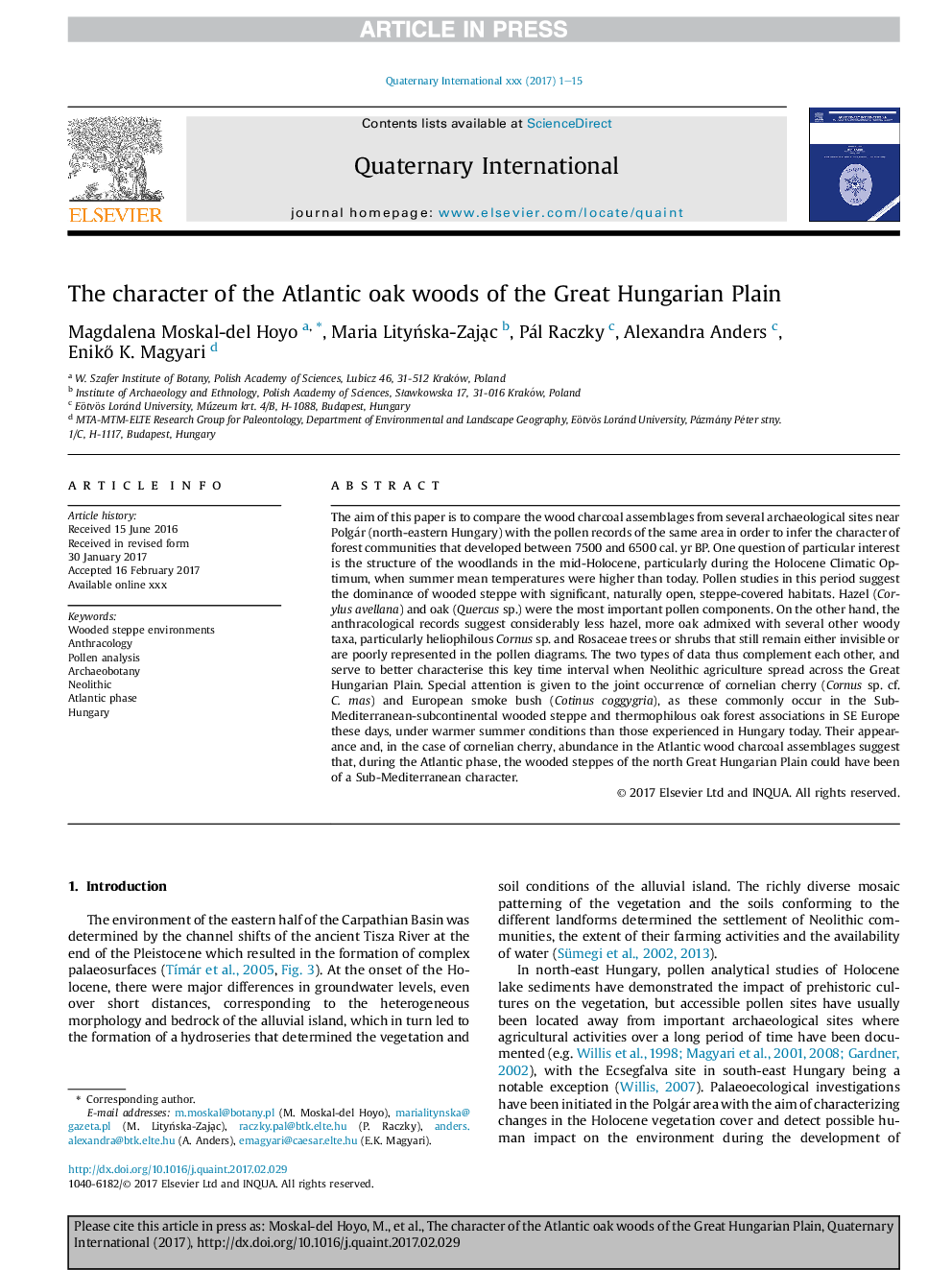| Article ID | Journal | Published Year | Pages | File Type |
|---|---|---|---|---|
| 7451021 | Quaternary International | 2018 | 15 Pages |
Abstract
The aim of this paper is to compare the wood charcoal assemblages from several archaeological sites near Polgár (north-eastern Hungary) with the pollen records of the same area in order to infer the character of forest communities that developed between 7500 and 6500 cal. yr BP. One question of particular interest is the structure of the woodlands in the mid-Holocene, particularly during the Holocene Climatic Optimum, when summer mean temperatures were higher than today. Pollen studies in this period suggest the dominance of wooded steppe with significant, naturally open, steppe-covered habitats. Hazel (Corylus avellana) and oak (Quercus sp.) were the most important pollen components. On the other hand, the anthracological records suggest considerably less hazel, more oak admixed with several other woody taxa, particularly heliophilous Cornus sp. and Rosaceae trees or shrubs that still remain either invisible or are poorly represented in the pollen diagrams. The two types of data thus complement each other, and serve to better characterise this key time interval when Neolithic agriculture spread across the Great Hungarian Plain. Special attention is given to the joint occurrence of cornelian cherry (Cornus sp. cf. C. mas) and European smoke bush (Cotinus coggygria), as these commonly occur in the Sub-Mediterranean-subcontinental wooded steppe and thermophilous oak forest associations in SE Europe these days, under warmer summer conditions than those experienced in Hungary today. Their appearance and, in the case of cornelian cherry, abundance in the Atlantic wood charcoal assemblages suggest that, during the Atlantic phase, the wooded steppes of the north Great Hungarian Plain could have been of a Sub-Mediterranean character.
Related Topics
Physical Sciences and Engineering
Earth and Planetary Sciences
Geology
Authors
Magdalena Moskal-del Hoyo, Maria LityÅska-ZajÄ
c, Pál Raczky, Alexandra Anders, EnikÅ K. Magyari,
